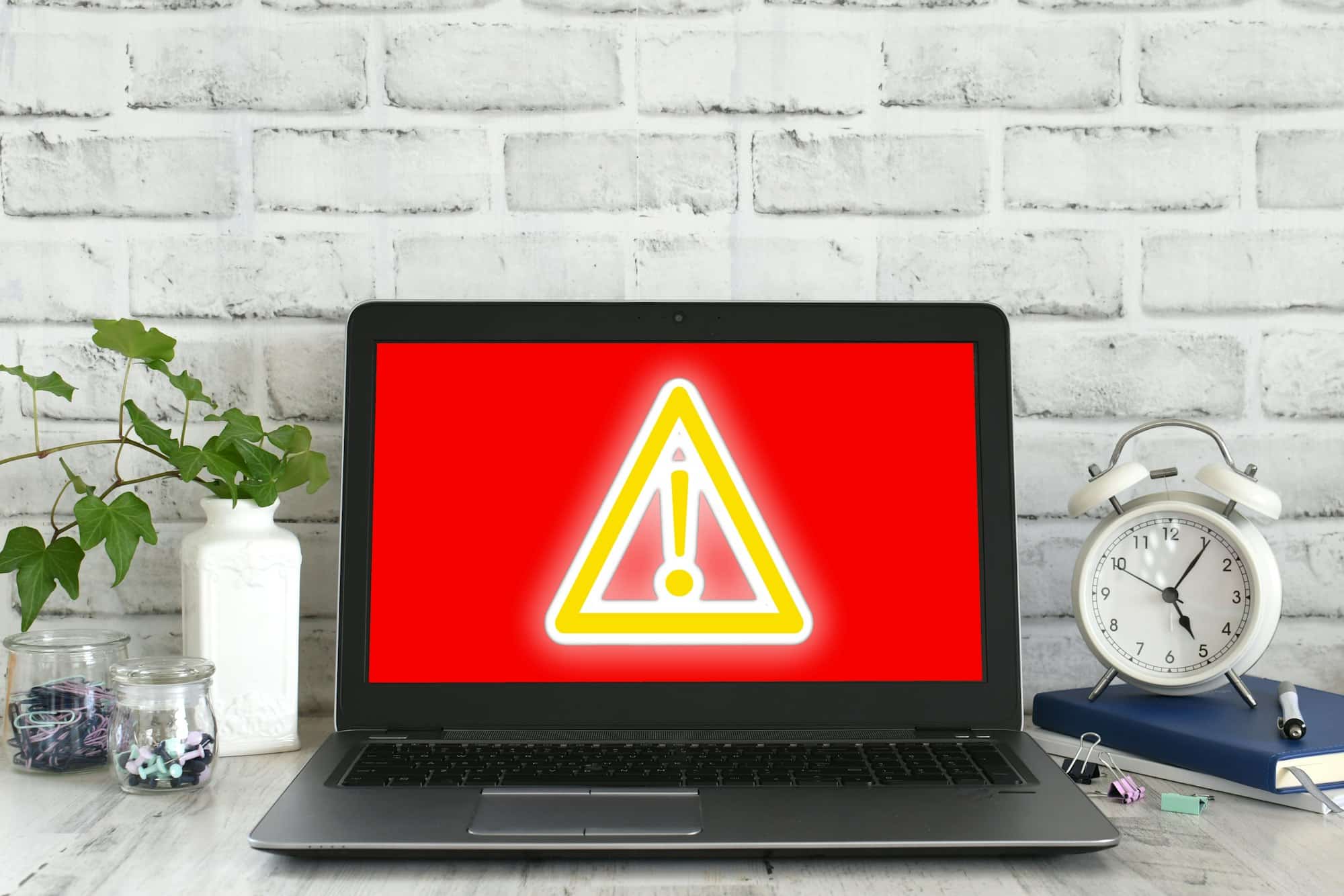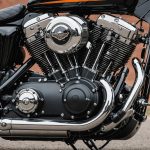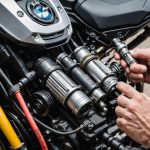Understanding the Fuel Filter
A fuel filter plays a critical role in the fuel filtration system of petrol vehicles, ensuring optimal engine performance and longevity. It acts as a barrier, preventing dirt and contaminants from entering the engine, which could otherwise lead to severe damage. Maintaining a clean filter is an essential aspect of petrol car maintenance.
The fuel filtration system consists of various components, including the fuel pump, lines, and injectors—working together to deliver clean fuel to the engine. The filter itself is strategically placed to capture impurities before they reach sensitive engine parts. When in good condition, it efficiently filters out contaminants, allowing only clean fuel to pass through.
Also read : Exploring the Safety Risks of Adding a Performance Chip to Your Turbocharged Car
However, a clogged or damaged fuel filter can lead to several adverse consequences. For instance, restricted fuel flow may cause engine misfires, decreased performance, and even stalling. Over time, a compromised filter could shorten the lifespan of the fuel pump and injectors, resulting in costly repairs.
Regularly checking and replacing the fuel filter is a preventive measure that enhances the overall health and efficiency of petrol vehicles. By understanding the significance of this component and incorporating routine checks into petrol car maintenance, drivers can safeguard their vehicle’s performance and extend its lifespan.
Also to read : Essential Safety Guidelines for Modifying Cargo Barriers in Commercial Vans
Safety Precautions Before Replacement
Embarking on DIY car maintenance requires understanding specific safety measures to prevent mishaps. Wearing protective gear is paramount when handling fuel systems. Ensure to wear safety goggles and gloves to protect yourself from volatile chemicals and sharp tools. Appropriate clothing minimizes the risk of injuries, and suitable footwear should protect feet from falling objects.
Before beginning any replacement, position your vehicle securely. It should be on a flat surface with the parking brake engaged. In some cases, it might be necessary to use wheel chocks to prevent any movement. Secure your vehicle further by using a jack stand—this precaution ensures you’re safe should the vehicle slip.
The fuel system demands specific attention due to the risks involved with fuel handling. Fuel is highly flammable, necessitating a workspace free from sparks and open flames. Store fuel in approved containers and ensure proper ventilation to avoid inhaling harmful fumes. Additionally, avoid direct contact with the skin to prevent irritation.
By adhering to these safety measures, DIY car maintenance becomes safer and more efficient. Always prioritise safety gear and secure the working environment to mitigate risks associated with fuel handling, ensuring a secure and successful maintenance experience.
Tools and Materials Required
Embarking on a fuel filter change for your petrol engine means prioritizing both efficiency and safety. Think of it as an opportunity to combine precision and preparation. To help, a specific set of tools and maintenance supplies is crucial.
Required tools include a selection of wrenches and screwdrivers that suit your car model. For many vehicles, a socket wrench set and flathead screwdriver are indispensable. These will help in removing and reinstalling the fuel filter without damaging the surrounding components.
Consider the type of fuel filter materials compatible with your car. Manufacturers usually recommend specific fuel filters, so it’s wise to check the car manual or consult a professional to ensure you’re using the correct type. This prevents potential engine issues after installation.
Safety can’t be overstated—having safety materials on hand like rags, gloves, and goggles is non-negotiable. Gloves and goggles will protect you from any fuel splashes, while rags are useful for cleaning up spills to avoid slippery surfaces.
Equipped with these, you’re not just safeguarding yourself but are ensuring a smooth, obstacle-free task. So, gather your tools, verify the fuel filter compatibility, and don the safety gear to facilitate a successful filter change.
Step-by-Step Fuel Filter Replacement Process
Replacing a fuel filter can seem daunting, but with the right approach, performing a DIY fuel filter change is manageable. Here’s how to get it done for your petrol car repair.
Preparing the Vehicle
Start by locating the fuel filter; typically found along the fuel line. Ensure safety by disconnecting the battery to prevent any electrical mishaps. Relieve fuel system pressure by removing the fuel pump fuse or relay and starting the engine until it stalls. This avoids any unintended fuel spillage during the process.
Removing the Old Fuel Filter
Next, carefully loosen the clamps or fittings securing the old filter. Use a wrench to unscrew any bolts; remember, a slow approach prevents damage to connectors. Make a note of the filter’s orientation; you’ll reinstall the new one in the same direction.
Installing the New Fuel Filter
To install the new filter, first ensure that all fittings and connectors are in good condition and replace any that are damaged. Align the new filter in the same direction as the old one, connect fittings securely, and tighten them properly to prevent leaks. Follow by reattaching any hoses, and finally, reconnect the battery.
Once complete, start the car and check for any leaks. If you notice any fuel odor, revisit the connection points to ensure all are fully secured.
Troubleshooting Common Issues
When encountering car maintenance issues related to fuel filters, understanding the signs is crucial. A faulty fuel filter often manifests through symptoms such as difficulty starting the engine, a rough idle, or unexpected engine stalling. These signs indicate that the filter may be clogged or damaged, hindering fuel flow to the engine.
Signs of a Faulty Fuel Filter
Be attentive to common problems like reduced engine performance or hesitation during acceleration. These issues often emerge when the fuel filter is unable to supply sufficient fuel, impairing the overall operation of your vehicle.
Strategies for Fuel Filter Troubleshooting
If you’ve recently replaced your fuel filter but notice persistent issues, there are strategies to consider. First, ensure the correct installation of the filter—missteps during replacement can lead to ongoing troubleshooting needs. Secondly, check whether the fuel lines and connections are secure and leak-free; air leaks can disrupt fuel delivery.
Preventative Tips
To prevent future car maintenance issues, schedule regular inspections and replacements of the fuel filter as per the vehicle manufacturer’s recommendations. Consistent maintenance will reduce the risk of encountering common fuel filter problems, enhancing your vehicle’s performance and reliability. By staying proactive, you ensure smoother operations and save on potential repair costs.
Maintenance Tips for Longevity
Ensuring the longevity of your petrol vehicle involves several key practices, among which fuel filter maintenance is paramount. Fuel filters play a crucial role by trapping particles, dirt, and rust from fuel, preventing them from reaching the engine.
Recommended Replacement Intervals for Fuel Filters
To keep your vehicle running smoothly, a general guideline is to replace the fuel filter every 20,000 to 30,000 miles. However, this interval can vary based on the vehicle make, model, and driving conditions. It’s advisable to consult your vehicle manual for specific recommendations or consult with a certified mechanic.
Best Practices for Maintaining a Clean Fuel System
A clean fuel system enhances your car’s performance and fuel efficiency. Routine checks and proper vehicle upkeep are essential. Ensure you’re using good quality fuel and avoid letting the fuel level drop too low, which can cause sediment from the bottom of the tank to enter the fuel system.
Integrating Fuel Filter Checks into Regular Vehicle Maintenance
Incorporate fuel filter checks as part of your regular vehicle maintenance schedule. A streamlined approach might include:
- Checking the fuel filter’s condition during oil changes.
- Scheduling inspections every time you get your vehicle serviced.
- Keeping a log of maintenance activities to track replacements and services.
Such proactive steps not only aid in maintaining your vehicle’s performance but also extend its lifespan.
Conclusion and Additional Resources
Replacing a fuel filter is a crucial maintenance task that ensures your car runs smoothly. Treating this process with careful attention reduces the risk of fuel line blockages and engine performance issues. Numerous car repair resources are available to assist you. These include detailed fuel filter guides which explain each step with clarity and precision.
For those who prefer visual aids, video tutorials are invaluable. They offer a step-by-step walkthrough, making it easier to follow along. Pairing these with comprehensive repair manuals enhances understanding, as these documents often provide additional context or advice specific to your vehicle model.
However, it’s essential to recognize when professional help is warranted. While resources can guide you through various tasks, certain situations may require specialized skills. Consulting with a professional ensures that the repair is executed safely and effectively, safeguarding your vehicle’s functionality.
The resources available for further reading can help deepen your understanding of the fuel filter replacement process and other car maintenance tasks. Engaging with these will not only boost confidence in DIY repairs but also empower you to make informed decisions regarding vehicle upkeep.











